
A Tour of South West Scotland

This trip began and ended in Stranraer and we visited Portpatrick, Port William, Whithorn, Wigtown, Newton Stewart, Creetown and Gatehouse of fleet.
Our starting point of Stranraer is the largest town on the trip with a population of about 13,000. Stranraer, was the main ferry route to Ireland but this now operates to and from Cairnryan, just to the north of Stranraer. Stranraer lies at the head of Loch Ryan and is further for ferries from Ireland to travel than to Cairnryan. A move to bigger ferries meant that the approach to Stranraer was too shallow and this, combined with fuel savings, meant an end to Stranraer’s life as a ferry port in 2011.

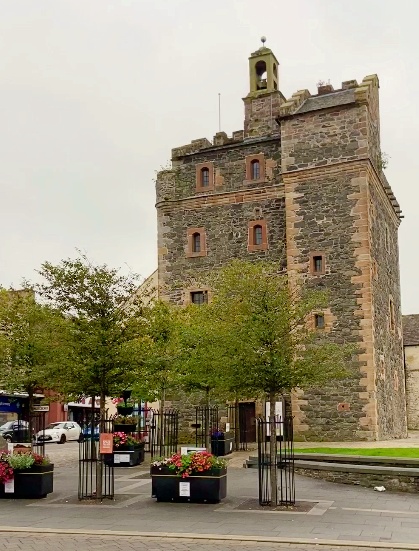
In the centre of Stranraer stands a medieval tower house built around 1500 which is called the Castle of St John. It has been a court, a prison and a garrison over the years but is now a visitor attraction. The former Town Hall is now a museum.

From Stranraer we headed for the very picturesque little village of Portpatrick which is only a few miles away. Portpatrick is on the west coast of a peninsula called the Rhins of Galloway. The southernmost point of this peninsula is called the Mull of Galloway and is the southernmost point of Scotland. Apparently it is possible to walk from the Mull of Galloway to Cape Wrath, which is the most northerly point in Britain, by joining together long distance walking routes. Portpatrick is a charming spot consisting of brightly painted houses around a bay and harbour. The houses extend up a steep hill atop of which sit a couple of hotels, one of which is a sister hotel to the North West Castle, owned by McMillan Hotels.
I tend to think that life on the planet only really began when I joined it but I have only recently began to notice that this is wrong. Portpatrick is closer to Ireland than any other point in Scotland and the distance to Donaghadee is only 21 miles and in 1616 there were regular ferry services between the two points carrying people, mail and cattle. There was no WIFI aboard but in every other respect it did everything that was required if you wanted to travel from Scotland to Ireland and it was 400 year’s ago.
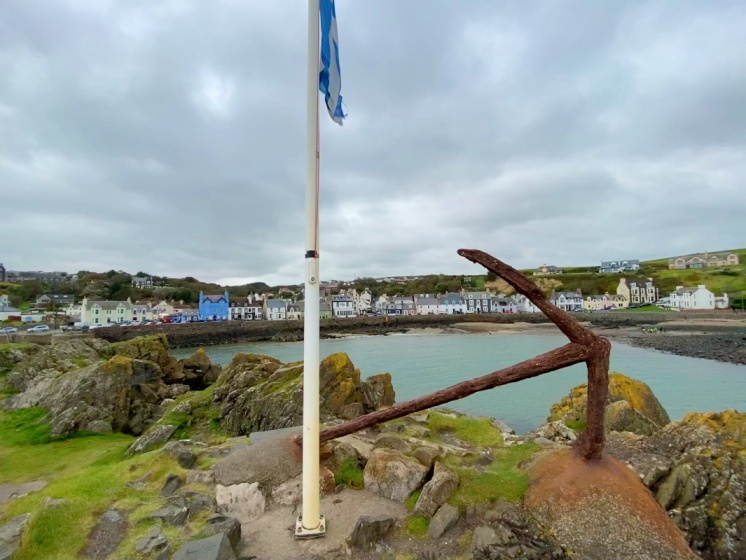
Things move on and in 1862 a ferry route was opened between Stranraer and Larne and the harbour at Portpatrick fell into disuse and its lighthouse was dismantled and re-erected in Sri Lanka. Portpatrick Harbour did recover as a fishing harbour and there are still some fishing boats operating from there. It is also a lifeboat station and a harbour for leisure craft. The village is now mostly focused on being a very popular spot for holidaymakers. The town has its own golf club with an 18 and a 9 hole golf course. The main course is called Dunskey after the castle close by and is a very enjoyable and scenic course to play.
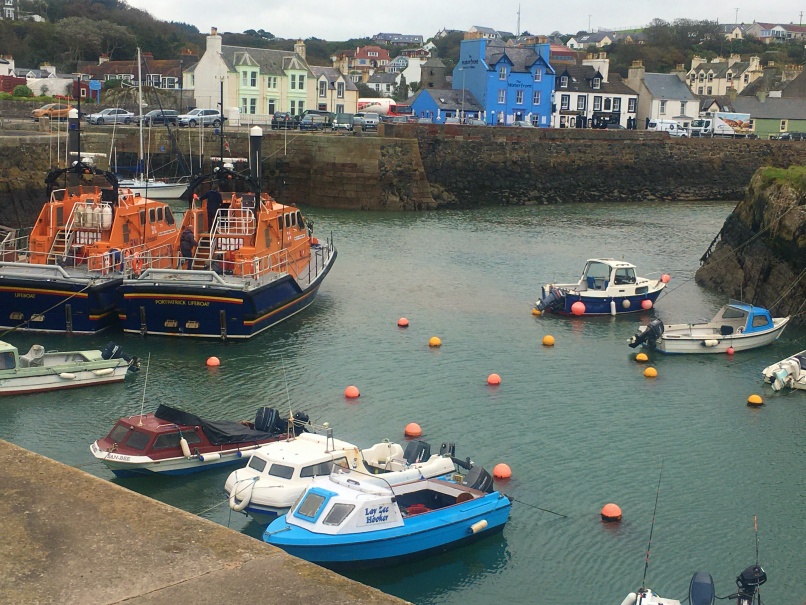
From Portpatrick, we didn’t travel down to the Mull of Galloway but instead headed inland to Glenluce from where we struck south to the Isle of Whithorn. This is at the southernmost tip of another peninsula running southwards, parallel to the Rhins of Galloway which is called The Machurs. Right at the top of the peninsula on Luce Bay sits what used to be called Glenluce Golf Club which is a very enjoyable links course. This has been re-branded as Wigtownshire County Golf Club but is still just as enjoyable to play as when it was called Glenluce.
The road hugs the coast on the westward side of the peninsula and eventually comes to the village of Port William. We stopped here and parked overlooking the sea where we could see the Mull of Galloway and just south of it, a couple of very prominent rocks. These are called Big Scares and Little Scares and are uninhabited bird sanctuaries.
From Port William we didn’t go all the way to the Isle of Whithorn which sits right on the end of the peninsula but cut inland to the town of Whithorn which is right in the middle, away from the coast. There has been a town here for a long time, further evidence of life before me, and is home to the shrine of St. Ninian. It serves the rural community on the peninsula although it was looking a bit sad during Covid with lots of shops and businesses closed and shuttered. My friend, Robin used to live here about 65 years ago when his father was manager of the bank and he remembers that they lived above the bank. There is no bank branch in Whithorn any longer, as you would guess, but it was easy to identify the grand old granite building on the main street that would have been the bank premises. This means that all those years ago, Robin’s Dad was working from home without the aid of the Internet.
The next town northwards on the peninsula is Wigtown. This seemed vey busy around the central square with people milling around looking almost normal apart from their masks.
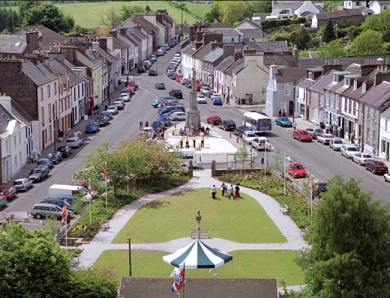
All of this activity centres on the many book shops in the town which is styled as Scotland’s book town. There is an annual book festival here which is second only in size to the book festival in Edinburgh. Like any big gathering of people, this didn’t happen this year.
The next town that we visited is called Newton Stewart which stands on the River Cree. The town was founded in the 1600s’s by an Earl of Galloway called William Stewart, hence the name. It is typical of market towns with a collection of all sorts of businesses along a main street with a clock tower, Town Hall and church or churches. Again, many of the businesses were closed and some looked as if they weren’t likely to open again. We did find somewhere for lunch, however.
After Newton Stewart we made a detour to visit the small town called Creetown which is now by-passed by the main route from Dumfries to Stranraer. This was mainly because I had stayed here on a cycling trip in a hotel called The Ellangowan.
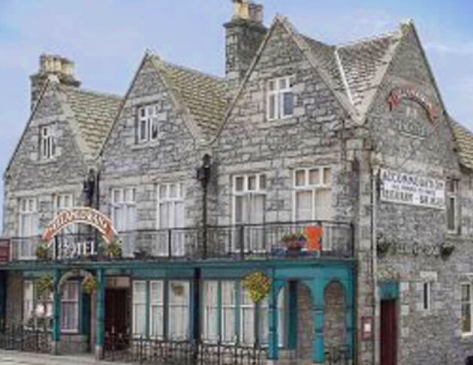
The hotel stands beside the mandatory clock tower and was used as a filmset for The Wicker Man starring Britt Ekland back in the 1970’s. It was probably chosen for its role because of its run down appearance and that hasn’t improved since, but today it was firmly closed - perhaps permanently. The town made its money from quarrying granite in the past but I remember it best for the pint of lager I had in The Ellangowan bar after a long day cycling. The cycle trip was from Carlisle to Dumbarton and this is a link to a description.
After Creetown we made our way to Gatehouse of Fleet. This is another picturesque and quaint place to stop and wander, with brightly coloured houses and the mandatory clock tower. Gatehouse was our last stop and we made our way back to Stranraer directly on the main route between Dumfries and Stranraer, the A75.
ronnie@outandaboutinscotland.co.uk